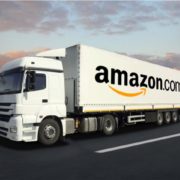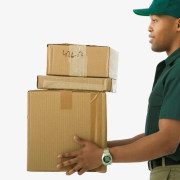Recent financial reports from Amazon attributed a downturn in profits as a direct result of the company’s heavy investment into speeding up delivery times to their customers. Amazon’s third quarter profits fell 26% from a year ago to $2.1 Billion. This was Amazon’s first profit decline since 2017 and second reporting quarter in a row where the company missed analyst’s expectations.
Amazon reported that their world-wide shipping costs increased 46% to $9.6 Billion from the previous year. The additional costs were related to its growth of its one-day shipping program for Prime members. Amazon projects that their fourth quarter expenditures in this area alone will almost double from their second quarter expenditures, to a figure of $1.5 Billion.
Adding to these costs was the growth in hiring with their current employment at approximately 750,000 workers. The hiring growth is necessary based on the need to have inventory placed closer to their ultimate customers so Amazon can in fact meet their one-day delivery commitments. More Fulfillment centers and more employees in those fulfillment centers filling orders add to the cost of expedited shipping for sure.
We have been reporting for some time now that offering “free shipping” and “faster shipping” services to customers creates significant cost drivers that Retailers, Brands or Consumer Products companies must continually keep their eye on. They must ensure these costs do not spiral out of control, which is easier said than done. Yes, we certainly do understand that overall customer sentiment is to demand “free AND faster shipping” and that these trends are a direct result of “The Amazon Effect.” But by following the leader, (in this case Amazon), do Retailers, Brands or Consumer Products companies have the wherewithal to truly control their logistics costs while they try to compete head on with “the Big Guys”, (let’s not forget about Wal-Mart and Target)!
Well, the answer to that question depends on whether or not these companies have implemented a comprehensive Data Science approach to analyzing and ultimately controlling their transportation and logistics costs. For companies to be truly successful they must first gain a complete understanding of how their costs are calculated by the freight carriers.
It’s necessary to create an ongoing and comprehensive analysis of their “actual” shipment activity and “actual” costs associated with that shipping activity. This process also requires a comprehensive invoice audit process for all transportation and logistics related invoices to ensure 100% invoice payment accuracy in accordance with all carrier contracts and pricing agreements.
There is no way a company can truly manage the risk of overspending on transportation and logistics without these processes firmly in place. And very often Retailers, Brands or Consumer Products companies do not have the expertise in house to be totally successful at these tasks.
There are many examples of shippers being lulled into a false sense of security believing their transportation and logistics costs are completely under control and match their pricing agreements to a tee; here are just two of those examples.
- A shipper negotiated revised rates with their primary parcel carrier and was assured by that parcel carrier that their new contract would reduce their parcel shipping costs in excess of $300K annually. Before signing the actual contract, the company had their invoice auditor perform a financial audit to determine if the “New” rates they had just negotiated would in fact save the company that same amount of money the carrier was claiming they would. Well the value of the financial audit turned out to be “PRICELESS!” The financial audit results indicated that the shipper would not be saving anywhere near the $300K annually and in fact would actually be paying more than their current contract rates.
So how could this possibly happen? It was just that the parcel carrier offered incentives that were not completely geared to the shipper’s actual shipping services. In other words, the carrier offered larger discounts on services the shipper rarely used. The carrier did not offer additional incentives on many of the surcharges the shipper was responsible for paying. And finally, they offered the shipper additional financial considerations if the shipper upgraded certain technologies, which the shipper never had any interest in doing and therefore never actually took advantage of.
The financial audit provided “Big Data Mining” capabilities the shipper did not have access to in house. The auditor tracked every package the shipper made by service type, zone, actual shipment weight, (billed weight if different), along with applying any required surcharges and compared the current and proposed new incentives and Viola, the proposed savings immediately disappeared.
- In another case, a shipper’s weekly shipping volume fluctuated throughout the year and sometimes moved them into a position where they no longer qualified for any carrier discounts. The contract they negotiated did not take into account the peaks and valleys this particular shipper’s business dealt with. Only after the shipper engaged their Third Party Auditor to perform a financial audit of their actual shipping activity, did the company find out they were constantly losing ground when their shipping volumes dropped to certain levels. And most importantly, the shipper had no idea their shipments were not being discounted during those shipping season downturns.
So, what actually is a financial audit; it is an audit that goes much further than a service audit where Third Party Auditors are merely auditing parcel invoices for late delivery refunds. While a service audit is an extremely valuable audit, it must be coupled with a financial audit that compares the shipper’s actual shipping activity with the actual rates charged and matches those costs to the shipper’s contract or pricing agreement to ensure 100% accuracy; all this while at the same time providing insight into areas where costs just might be raging out of control without the shippers’ knowledge.
So, when companies are pressured to offer “faster shipping” or “free shipping” services or both for that matter to its customers, having a comprehensive financial audit in place will keep a watchful eye on the shipper’s freight spend. It will trigger alarms if the costs are exceeding shippers’ budgets which they continually rely on to assure profitability.
If your company is not receiving the ongoing value of a service audit combined with a financial audit it may be time to make a change.








